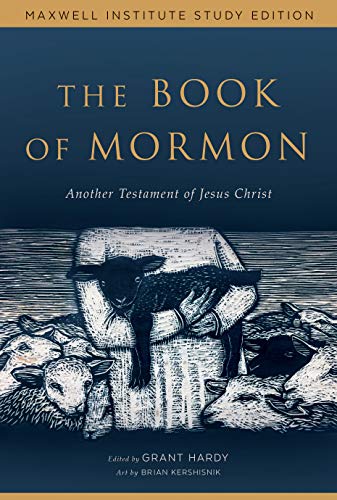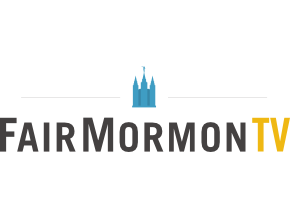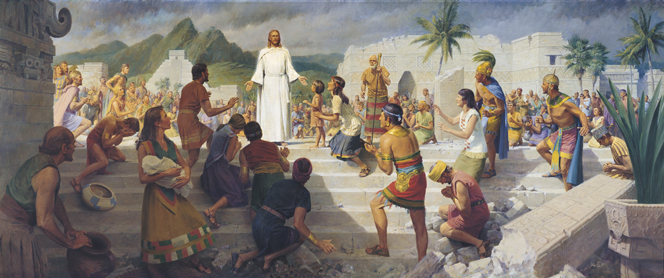Podcast: Download (44.5MB)
Subscribe: RSS
This podcast series features past FairMormon Conference presentations. This episode is a presentation from our 2018 conference.
Matt McBride, Women of the Global Church: Stories on history.lds.org
Transcript available here.
 Matthew McBride is the web content manager for the Church History Department and a graduate student in American history at the University of Utah. He is the author of A House for the Most High: The Story of the Original Nauvoo Temple and coeditor of Revelations in Context: The Stories behind the Sections of the Doctrine and Covenants. Matthew has also published in the Ensign and the Journal of Mormon History. He lives in American Fork, Utah, with his wife Mary and their four children.
Matthew McBride is the web content manager for the Church History Department and a graduate student in American history at the University of Utah. He is the author of A House for the Most High: The Story of the Original Nauvoo Temple and coeditor of Revelations in Context: The Stories behind the Sections of the Doctrine and Covenants. Matthew has also published in the Ensign and the Journal of Mormon History. He lives in American Fork, Utah, with his wife Mary and their four children.
Audio Copyright © 2018 The Foundation for Apologetic Information and Research, Inc. Any reproduction or transcription of this material without prior express written permission is prohibited.


 Dr. Robinson received his Ph.D. in Marriage and Family Therapy from Brigham Young University. His doctoral dissertation was a qualitative study in of married Latter-Day Saint men with histories of homosexual activity. For the last 25 years he has worked in private practice specializing in assisting individuals experiencing a conflict between their experience of same-sex attraction and their religious beliefs and/or personal values. He has given numerous presentations on the issue of same-sex attraction and has conducted training for therapists and a variety of settings. He and his wife Wendy are the parents of eight children and the grandparents of eight.
Dr. Robinson received his Ph.D. in Marriage and Family Therapy from Brigham Young University. His doctoral dissertation was a qualitative study in of married Latter-Day Saint men with histories of homosexual activity. For the last 25 years he has worked in private practice specializing in assisting individuals experiencing a conflict between their experience of same-sex attraction and their religious beliefs and/or personal values. He has given numerous presentations on the issue of same-sex attraction and has conducted training for therapists and a variety of settings. He and his wife Wendy are the parents of eight children and the grandparents of eight. Brad Wilcox is a professor in the Department of Ancient Scripture at Brigham Young University where he also enjoys working with such programs as Especially for Youth, Women’s Conference, and Campus Education Week. He is the author of the book The Continuous Atonement and the BYU devotional “His Grace is Sufficient.” Brad grew up in Provo, Utah, except for childhood years spent in Ethiopia, Africa. He served a mission for the Church of Jesus Christ of Latter-day Saints in Chile and later returned to that country to preside over the Chile Santiago East Mission from 2003 to 2006. He and his family have also lived for a time in New Zealand and Spain where he directed study abroad programs for Brigham Young University. Brad has served as a member of the Sunday School General Board. He and his wife, Debi, have four children and six grandchildren. Reading, writing, teaching, and traveling are some of his favorite things. He loves Peanut M&M’s and pepperoni pizza, but he realizes that doesn’t sound too healthy so he is really trying hard to learn to love salads.
Brad Wilcox is a professor in the Department of Ancient Scripture at Brigham Young University where he also enjoys working with such programs as Especially for Youth, Women’s Conference, and Campus Education Week. He is the author of the book The Continuous Atonement and the BYU devotional “His Grace is Sufficient.” Brad grew up in Provo, Utah, except for childhood years spent in Ethiopia, Africa. He served a mission for the Church of Jesus Christ of Latter-day Saints in Chile and later returned to that country to preside over the Chile Santiago East Mission from 2003 to 2006. He and his family have also lived for a time in New Zealand and Spain where he directed study abroad programs for Brigham Young University. Brad has served as a member of the Sunday School General Board. He and his wife, Debi, have four children and six grandchildren. Reading, writing, teaching, and traveling are some of his favorite things. He loves Peanut M&M’s and pepperoni pizza, but he realizes that doesn’t sound too healthy so he is really trying hard to learn to love salads.
 Richard Lloyd Anderson (1926-2018) was a Professor Emeritus of Ancient Scripture at Brigham Young University, and senior research fellow at the Joseph Fielding Smith Institute for Latter-day Saint History at Brigham Young University. More information about him can be found
Richard Lloyd Anderson (1926-2018) was a Professor Emeritus of Ancient Scripture at Brigham Young University, and senior research fellow at the Joseph Fielding Smith Institute for Latter-day Saint History at Brigham Young University. More information about him can be found 
 A native of southern California, Daniel C. Peterson received a bachelor’s degree in Greek and philosophy from Brigham Young University (BYU) and, after several years of study in Jerusalem and Cairo, earned his Ph.D. in Near Eastern Languages and Cultures from the University of California at Los Angeles (UCLA). Dr. Peterson is a professor of Islamic Studies and Arabic at BYU, where he has taught Arabic language and literature at all levels, Islamic philosophy, Islamic culture and civilization, Islamic religion, the Qur’an, the introductory and senior “capstone” courses for Middle Eastern Studies majors, and various other occasional specialized classes. He is the author of several books and numerous articles on Islamic and Latter-day Saint topics–including a biography entitled Muhammad: Prophet of God (Eerdmans, 2007)—and has lectured across the United States, in Europe, Australia, and New Zealand, and at various Islamic universities in the Near East and Asia. He served in the Switzerland Zürich Mission (1972-1974), and, for approximately eight years, on the Gospel Doctrine writing committee for The Church of Jesus Christ of Latter-day Saints. He also presided for a time as the bishop of a singles ward adjacent to Utah Valley University. Dr. Peterson is married to the former Deborah Stephens, of Lakewood, Colorado, and they are the parents of three sons.
A native of southern California, Daniel C. Peterson received a bachelor’s degree in Greek and philosophy from Brigham Young University (BYU) and, after several years of study in Jerusalem and Cairo, earned his Ph.D. in Near Eastern Languages and Cultures from the University of California at Los Angeles (UCLA). Dr. Peterson is a professor of Islamic Studies and Arabic at BYU, where he has taught Arabic language and literature at all levels, Islamic philosophy, Islamic culture and civilization, Islamic religion, the Qur’an, the introductory and senior “capstone” courses for Middle Eastern Studies majors, and various other occasional specialized classes. He is the author of several books and numerous articles on Islamic and Latter-day Saint topics–including a biography entitled Muhammad: Prophet of God (Eerdmans, 2007)—and has lectured across the United States, in Europe, Australia, and New Zealand, and at various Islamic universities in the Near East and Asia. He served in the Switzerland Zürich Mission (1972-1974), and, for approximately eight years, on the Gospel Doctrine writing committee for The Church of Jesus Christ of Latter-day Saints. He also presided for a time as the bishop of a singles ward adjacent to Utah Valley University. Dr. Peterson is married to the former Deborah Stephens, of Lakewood, Colorado, and they are the parents of three sons.